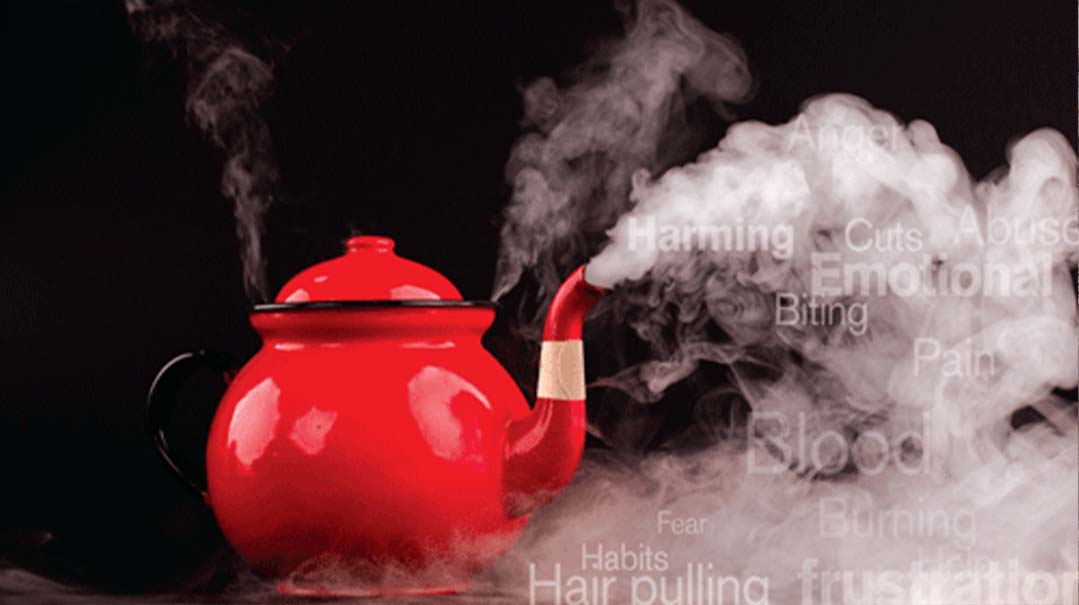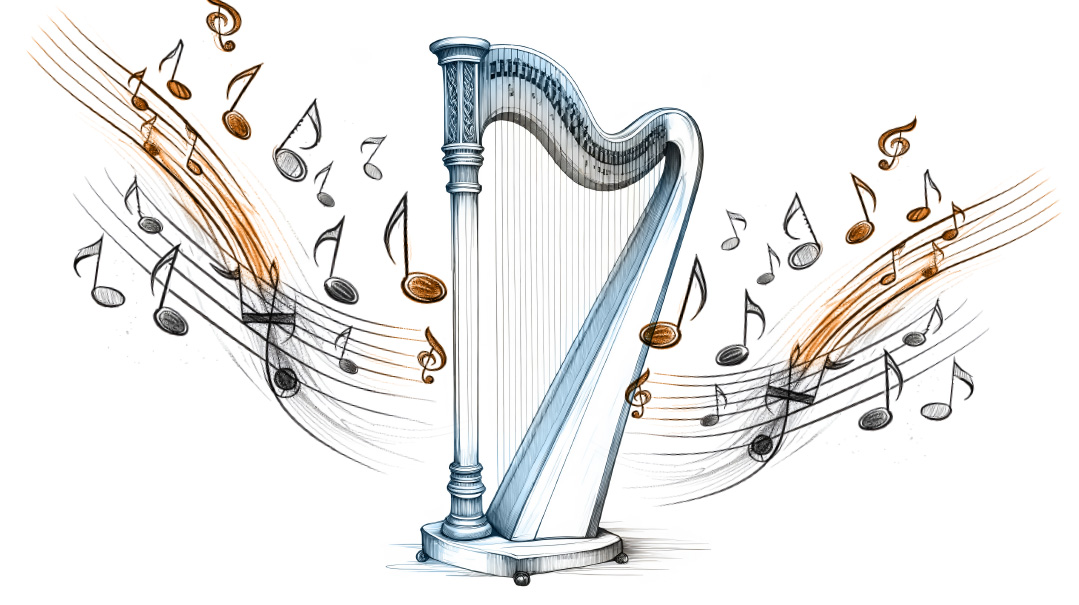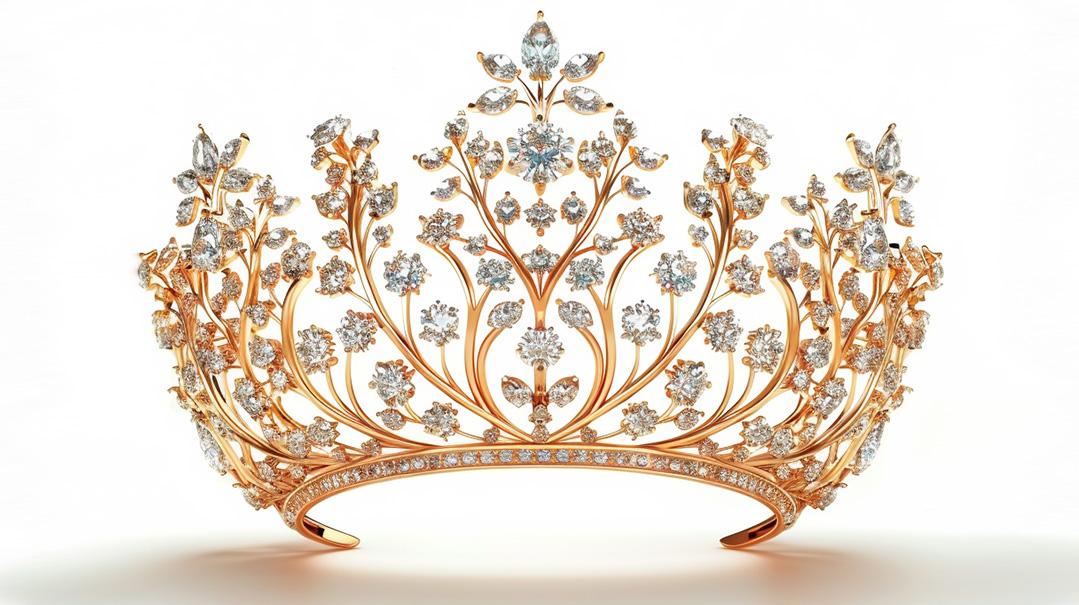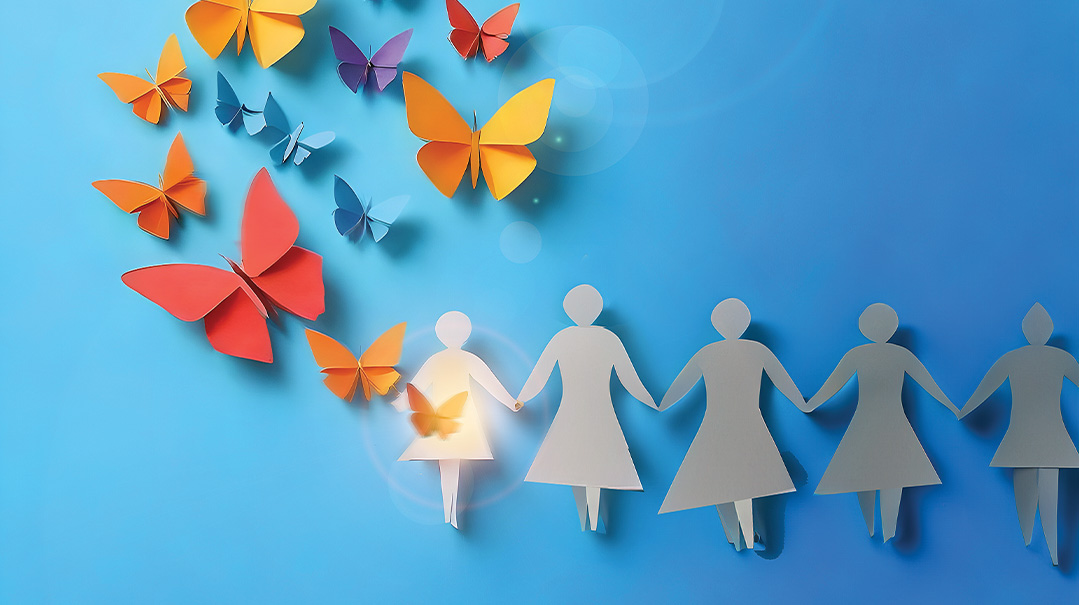When Pain Reaches A Boiling Point
| February 16, 2011An alarming look at self-injurious behaviors in the frum community

“How many of you have experienced a problem with cutting in your institution?” asked renowned psychologist Dr. David Pelcovitz at a seminar offered to a wide-ranging group of American educators in Jerusalem.
Every hand in the audience went up.
Thoroughly shocked at the unanimous response, Dr. Pelcovitz thought for a moment, and then it dawned on him: these principals believed he was referring to the widespread issue of students “cutting” class.
After clarifying his intent and the misunderstanding, only two principals bashfully admitted they’d encountered the awful phenomenon in their schools. But Dr. Pelcovitz knew better: he waited a minute longer, and slowly, hand by hand, about half of the educators in the room acknowledged they’d faced the behavior.
Dr. Pelcovitz’s suspicions were confirmed: cutting, a self-injurious behavior infinitely more deleterious than playing hooky, is prevalent in significant numbers in the frum community.
Self-Injury: An Overview
Defined as any intentional injury to one’s own body tissue without conscious suicidal intent, self-injury (also referred to as self-harm or self-mutilation) occurs in an estimated 4 to 10 percent of Americans. Though it most commonly appears in the form of cutting, self-injurers have also been found to inflict pain through burning, scratching, hair-pulling (trichotillomania), hitting, head-banging, biting, or interfering with the healing of wounds.
“I started off using noninvasive things — like my own fingernails, which would just raise welts on my skin. But eventually I turned to anything that would inflict pain,” recounts Esther,* who began self-harming while in high school. “Over the course of my experience I used safety pins, kitchen knives, wire, broken glass, and razors. I would also prevent my scabs from healing (even those from accidental injuries), and sometimes, if I was really frustrated, I would bang my head or bite myself.”
Sufferers like Esther often inflict wounds on the wrists, upper arms, and inner thighs; many prefer to wound themselves in places that will be undetectable to others.
“I do have some faint scars lower down on my arms where I wasn’t careful enough,” admits Esther.
Psychotherapist Marcia Kesner — adjunct professor at Yeshiva University’s Ferkauf Graduate School of Psychology and clinical director of Darkah, a Flatbush residence for young women with mental illness — notes that the location of the cuts can be a good indicator of the underlying emotions.
“If the lesions are in a visible place on the body, it’s most likely that the individual has resorted to this behavior in a desperate plea for intervention. If not, it’s possible that the individual is only self-harming as a method of self-soothing in the face of pain.”
Of Onions and Garlic
Esther’s profile is typical of the self-harming individual. Although self-injury can occur in either gender, at any age, and in any race of people, it occurs most often among Caucasian adolescent females.
“Approximately 85 percent of the active cutters I see are adolescents,” confirms Marcia Kesner. “And the vast majority of these teenagers are young women.”
She speculates why this is the case. “I believe teens have fewer opportunities to express their emotions. A frustrated or upset adult can go shopping, have a drink, or engage in other less-than-savory, potentially addictive behaviors to manage their turbulent emotional state, but a teenager doesn’t have that same level of freedom.
“Additionally, girls are more likely to be affected, because unlike boys, they tend to act internally rather than externally. When young women suffer from mental illness, they end up in psychiatric hospitals, but when young men become mentally ill, they end up in the criminal justice system. Boys tend to release their frustrations through physical aggression, unlawful behavior, or property damage, while girls turn inward and self-inflict pain.”
Dr. Pelcovitz concurs with this sobering assessment. “I once heard it said by Dr. Dennis P. Cantwell, famed professor of psychiatry at UCLA, that behavioral issues in adolescents are either garlic or onion. Girls are more likely to be ‘onions,’ the alliums associated with tears, as they indulge in actions that cause themselves pain; while boys are inclined to ‘garlic-eater’ patterns — behaviors that make life unpleasant for others around them.”
Other mental health professionals conjecture that women may simply be more open to therapy than men; hence the greater number of known clinical female cases.
“I suspect there’s a lot of self-injury that goes untreated,” surmises Marcia Kesner.
Whether it presents in males or females, another key feature of self-harming is its nonsuicidal nature. While there is always the possibility that serious wounds will result in life-threatening damage, self-injury is not considered to be a suicidal behavior, and Dr. Pelcovitz feels it’s important to emphasize this distinguishing element.
“In psychiatric literature, self-injury is often referred to as ‘anti-suicide.’ In many cases, the cuts or burns are a cry for help.” In addition, he notes that while definitely heartrending to behold, most of the injuries he has observed are superficial, and generally do not require hospitalization.
Pleasure from Pain
When most emotionally healthy individuals hear about a behavior as gruesome as cutting, they ask the same obvious question: why would someone intentionally cause themselves pain?
“It’s difficult for people to accept this,” says Dr. Pelcovitz, “but for addicted individuals, self-injury provides substantial relief.”
Former sufferer Esther confirms this seeming paradox. “It makes no sense, but somehow, it felt good. Though I’m pretty sensitive to pain in general, there is no comparison between accidental bruises and deliberate wounds; the pain from the latter was comforting.”
Tova,* another former self-injurer who struggled with the behavior for years, says that for her, cutting was like uncovering a boiling pot of water on the verge of exploding.
“During my cutting years, I experienced an overload of feelings. Then, I called it sadness and anger. Now I know it was a mixture of teenage angst, confusion, depression, and a lot of anxiety. When something would trigger these feelings to ‘boil,’ I needed to release them. Many people who feel overwhelmed yell or throw things; instead, I internalized the pain and chose to destroy myself. Watching blood seep out of a cut was like seeing that steam curl out of the pot — an instant relief. I wouldn’t describe the sensation as pleasurable, but rather calming.”
No one is immune to stress, but Tova was evidently inundated by an array of exceptionally devastating emotions. What are the factors that can create such high levels of angst? What are the provocations for such drastic measures of emotional expression?
Who’s at Risk
There are numerous predisposing vulnerability factors for self-injury. Among the most common ones are a history of abuse, poor self-esteem, high levels of perfectionism, dissatisfaction with one’s body, and extreme anxiety or depression.
For Shani,* a nineteen-year-old girl who first started cutting at thirteen, several of these causes applied.
“I was abused for about two years before I began self-harming,” she admits. “But aside from this trauma, I also suffered from terribly low self-esteem. I got good grades and had lots of friends; on the outside, it seemed like my life was perfect. But on the inside, I felt perpetually anxious and insecure.
“I now know that this was likely a result of my family situation. My divorced mother faced a serious weight problem and she would release her frustration on me, labeling me ‘fat’ and ‘ugly.’ I felt I’d only be worthy of love if I was skinny, and this ultimately led to an eating disorder accompanied by cutting.”
Indeed, a large percentage of self-injury cases occur simultaneously with (yet independently of) eating disorders like anorexia and bulimia. In Shani’s case, she’s basically gotten the cutting under control, but she still struggles to free herself from the binds of bulimia.
“The behaviors share striking similarities,” observes Marcia Kesner. “Both purging and cutting are self-aggressive, harmful actions, committed by people unable to communicate their emotions in a healthy manner. These behaviors distract them from overwhelming emotional pain.”
Not all cutters, however, are victims of abuse. Esther reveals what impelled her to engage in the behavior. “Things had been building up for years — family stress, loneliness, extreme perfectionism, and a dreadful self-image — but it was entering into the shidduch world that really pushed me over the edge. I was scared of getting married, and the dating process opened up a well of unfamiliar emotions, which I had no clue how to manage. I was completely overwhelmed.”
Using a humorous yet powerful analogy, she likens her teenage years to an overstuffed freezer. “You can endlessly stuff the things you don’t want to deal with into the freezer and then slam the door shut — but at some point, when you open the door to cram in just one more item, all those frozen goods will come tumbling out onto your head.
“And what does a freezer do? It preserves whatever was put inside. So all the things you’ve jammed in remain just as rotten as they were originally, and when they finally topple out you have to deal with them all at once.
“This is exactly what happened to me. I had stuffed so much into my emotional ‘freezer’ that when this big thing called ‘dating’ came into my life, the freezer was just too full, and all of its contents came piling out. I couldn’t deal with the deluge, and I turned to cutting in my state of desperation.”
For some, however, the cutting habit began much earlier than the dating stage. Tova describes how her family situation and negative high school experience combined to form a volatile state of affairs.
“At that time, my family was going through a lot. My parents were struggling to learn how to manage my father’s bipolar disorder, and my younger sister was being treated for the same mental illness. There was a lot of yelling at home.
“Additionally, I was feeling frustrated with the lack of individual expression allowed in my Bais Yaakov–type school, and with the looks I received when I asked hashkafah-based questions. I began dressing like a punk, with black nail polish, spiked bracelets — the whole nine yards. My outward rebellion was a perfect expression of how I felt inside — angry, confused, and full of emotions I didn’t know how (and wasn’t allowed) to express. Cutting provided me with a much-needed outlet of expression.”
Blocking Out Emotions
From the testimonies of self-injurers, it’s apparent that the behavior provided them with considerable relief. But how does this actually work — how can throbbing cuts induce comfort?
Adina Schick, a psychology instructor at New York University who’s mentored several girls mired in self-injury, offers a revealing perspective. “A person cannot feel emotional and physical pain simultaneously. For many cutters, the physical pain from their wounds successfully masks the emotional pain they cannot bear to face; it’s far more manageable than the alternative.”
“Cutting took the focus off the other painful things in my life,” confirms Shani.
Alternatively, some self-injurers say that causing physical pain is a way of showing that they are alive, despite feeling dead and devoid of feelings inside. On a subconscious level, self-injury breaks their emotional numbness by forcing themselves to feel something, even if it is only physical pain.
Self-injury can also serve as a form of self-punishment for those who feel an inner sense of shame or guilt, or as a means of feeling some sort of control, especially in response to a stressful situation.
“I can’t describe the power I felt,” says Esther, “when I had burn blisters searing painfully on my arms under my sleeves, and I walked around my house smiling and joking with my family and pretending everything was completely fine. The ability to cover up even when I was in crazy pain became a kind of life jacket for me. It made me feel in control.”
Whatever the underlying motivation for self-injury, though, the journey from a one-time experimental act of desperation to a full-fledged addiction can be frighteningly swift. Former sufferers confide that once they made the first cut, they began spiraling downward — fast.
“Within weeks of starting to cut,” relates Tova, who is now a grateful wife and mother, “I was cutting multiple times a day. The number of cuts at each sitting varied, with one cut often sufficing, but other times (usually the angrier times), I needed to cut more than that.”
“It was quick enough to become very scary to me,” recounts Esther. “I realized I couldn’t stop; it was getting out of control. Some days I’d hurt myself multiple times; other times I’d be ‘good’ for weeks and not hurt myself at all.”
What’s more, Marcia Kesner notes that in order to get the satisfying rush they need, many self-harmers need to continually escalate the severity of the habit — possibly moving on to more dangerous methods when cutting no longer does the trick.
“Towards the end of my cutting phase,” relates Esther in a most startling statement, “I turned to burning myself. I found it ‘helped’ me the most. The pain was more intense, and I liked the constant throb better than the acute sharpness of cuts.”
Sometimes, well-meaning parents and friends believe that if they remove the implements used to self-injure, the sufferer will be compelled to stop. But Adina Schick dismisses this. “When all their ‘utensils’ were taken away, the girls I know became awfully creative. They were addicted, and would unfailingly find something else to use to get the relief they needed.”
Tackling the Problem
Treating self-injury is complicated business. Since the behavior is usually a coping strategy for a deeper emotional issue, if the causal issue is not resolved, the individual may cease cutting but resort to different, equally detrimental patterns. It’s for this reason that consultation with a licensed mental health professional is critical.
Sarah Mauer,* a mentor for several self-injuring girls who holds a master’s degree in counseling, offers a telling example from her experience.
“I worked with a girl who only developed her eating disorder after being ‘found out’ that she was self-injuring and was forced to stop hurting herself. It’s all about control; since she could no longer wield ‘power’ through cutting, she did it through anorexia.”
The first treatment step, of course, is recognizing the existence of the problem. In the secular world, one of the main warning signs for self-injury is when an individual is seen wearing long sleeves or pants in warm weather. This red flag, however, does not work for the frum community.
Then how do frum individuals land in therapy? Marcia Kesner describes how her self-harming clients make their way to her practice.
“Most of my clients come of their own volition; they are terrified that others will find them out. Either they know they’ll be going to sleepaway camp, where chances of being discovered are high, or they’ve reached marriageable age and realize they won’t be able to hide this secret from a spouse.
“Other clients seek therapy simply because they see cutting is not remediating their life situation, or because a concerned friend or sibling reinforced the danger in what they’re doing.
“Last, there are the ‘mandated’ clients who are metaphorically dragged into my office by parents or mentors who’ve discovered them. It’s always harder to treat a client who has little interest in being helped, but I try to develop a bond with each of my patients, and even those resistant to treatment at the beginning often become more amenable to the idea with time.”
Perhaps the most common therapy approach used by mental health professionals with self-injurers is dialectical behavior therapy (DBT), which involves teaching clients to use a toolbox of alternative coping mechanisms when faced with pain (see sidebar).
Cognitive behavioral therapy (CBT), which is based on the principle that thoughts determine feelings and feelings dictate behaviors, is also utilized frequently by therapists. In this approach, the therapist and client work on correcting inaccurate thoughts and cultivating positive ones in their stead.
Another route of treatment — often used to supplement conventional therapy — is medication.
“There are often strong biological factors behind self-injurious behavior,” says Dr. Pelcovitz. “About half of my self-harming clients are depressed, and many do significantly better on antidepressant medication.”
How long will a self-harming individual remain in therapy? Marcia Kesner estimates anywhere from three months to a year. But like alcoholics and other addicts, self-injurers still need to be monitored closely. Since the urge never truly disappears — it is merely reined in with learned skills —a stressful period can easily cause a client to regress, necessitating therapy once more.
School guidance counselor Shaindy Baumol* agrees that therapy is crucial, but cautions that it cannot stand alone.
“Professional help is important, but a lot can happen at every hour of every day. Therapy for two hours weekly is not going to suffice if you have ongoing reality that is unthinkably difficult. A self-injurer needs to have a network of caring, responsible adults to whom she can turn when she needs a home to crash in, a listening ear, or some logistics coordinated.”
An Ounce of Prevention
As with any mental health issue, prevention is always the preferred method. While there are no reliable statistics available, Dr. Pelcovitz and Mrs. Kesner both draw from their extensive clinical experience in stating their belief that self-injury in the frum community is steadily on the rise.
What can parents and community leaders do to help put a stop to this trend?
“Parents need to make their home an oasis of love and positive feelings in a stressful world,” asserts Dr. Pelcovitz. “Allow your kids to express their unique selves, without imposing any personal agendas of what you’d like them to look like.
“Additionally, any initiative the community takes to raise awareness of mental health issues is a huge step towards remediation. For example, schools can offer parents abuse-prevention programs to empower them to protect their children.”
Marcia Kesner believes that establishing open communication lines with children from a young age is crucial. “Make it safe for your kids to share their feelings with you. Help them identify their feelings, and teach them — by example — how to express emotions like frustration and pain. If your children observe healthy emotional expression in their parents, they’ll acquire these vital interpersonal tools and won’t need to turn to injurious methods.
“On a communal level, schools should increase the number of on-site guidance counselors and support staff, and the entire faculty should be highly alert for self-injury’s symptoms.”
Parents and community leaders can be proactive in minimizing the occurrence of self-injury. But when the behavior does make its dreaded appearance, it’s important to remember that with the right combination of professional and personal support, chances of recovery are good.
“I still have many scars,” says Tova. “But when I began dating my husband, I was totally open about my past, and he readily accepted me despite these unsightly blemishes.”
As unfortunate as it was, Tova is determined to mine the positive from her difficult experience. Speaking for many others in her position, she believes that her triumph over self-injury made her strong in ways she didn’t think possible.
“I still struggle a lot with anxiety and emotional boundaries, but I have an inner strength to fight that I didn’t know was there. I hope I can use my experience to help me become closer to Hashem, and help bring my children and students closer, too.”
Dialectical Behavior Therapy (DBT): A Quick Look at the Most Commonly Used Approach
Dialectical behavior therapy, or DBT, is widely considered by mental health professionals to be the gold standard in treating self-injury.
In this highly methodical approach, the therapist first trains the client to identify the triggers that precede cutting. These triggers are often stressful social situations, such as exam time in school or family simchahs, but they can also be specific smells, memories, or thoughts. Once the client can identify these triggers, she’ll be better equipped to battle the urge.
The client also learns to identify the physical and mental signs of oncoming stress (e.g., nausea, sweating, anxiety, irrational thinking) so that she can better stave off the compulsion to cut.
Next, the client becomes skilled at employing other coping mechanisms. These can include engaging in other enjoyable activities, using imagery of relaxing scenes to reduce tension, or doing something harmless that’s characterized by an intense feeling, such as taking a cold shower or eating a tangy candy.
Most importantly, clients learn how to communicate their feelings appropriately and effectively to others, without using put-downs or anger.
Psychotherapist Marcia Kesner shares a fascinating tenet of DBT.
“Clients are encouraged to call their therapist before the onset of a crisis, as a preventative measure to avoid self-injury. We want to give our clients only positive attention. If they call before the fact — a proactive act of seeking help — we assist them extensively, but if they call after the fact, they are attended to much more minimally.”
Dr. Pelcovitz explains, “We want the client to be able to say: ‘I’m about to cut myself. What can I do instead?
Tattletale or Hero?
Sometimes, the “cutter” tells a close friend or sibling about her habit in strict confidence, catapulting them into a wrenching conflict of what to do next.
“These confidantes feel unbearably torn,” attests Shaindy Baumol,* an elementary school guidance counselor in a New York Bais Yaakov who’s dealt extensively with self-injury. “They’d never want to betray trust, but they grasp that the problem is too big for their small shoulders.
“My first course of action is to calm them down and strengthen their conviction that they did the right thing. We discuss confidentiality — what does trust mean? I ask them, if you care for someone, how do you show it? What responsibilities do you have?
“Only once these tormented ‘turncoats’ have been reassured that they made the best possible decision in informing an adult can I move on to try and help the self-injurer.”
What Can I Do to Help?
Many people find themselves in the unenviable position of discovering self-injurious behavior in a person they love. Here are some dos and don’ts from the experts — and former self-harmers themselves — to ensure that your response will ameliorate and not worsen the problem.
- Speak gently; show concern. It’s imperative that the sufferer feels that you genuinely care about her wellbeing. Encourage her to seek intervention not for your sake, but for her own — because it will improve every area of her life.
- Get help. Every self-injurer, even one who is not yet open to ongoing therapy, should at least receive a professional evaluation. Often an evaluation will reveal previously undisclosed abuse or family issues.
- Provide unconditional love. Don’t call her crazy or disgusting for what she is doing; it is simply a sign that she is in a lot of inner pain. Offer a listening ear, but don’t take the place of a therapist — it’s too dangerous a territory.
- Don’t feed into the behavior. If the self-injurer is cutting to get extra attention from her friends, you may want to rethink the dynamics of the relationship. Consult with a qualified adult for guidance.
- Avoid the policeman role. Don’t become the watchman who ensures that your friend doesn’t cut. Let the therapist focus on the behavior itself while you create a general backdrop of love and support.
(Originally featured in Family First, Issue 229)
Oops! We could not locate your form.






